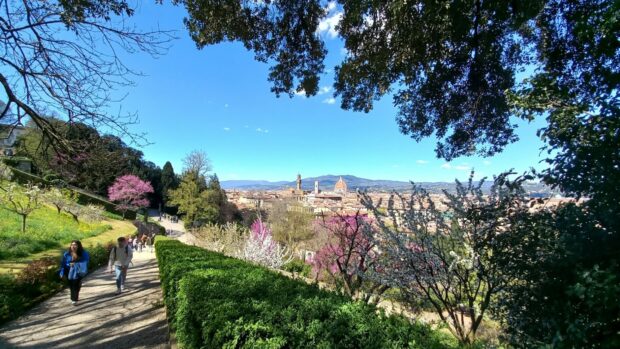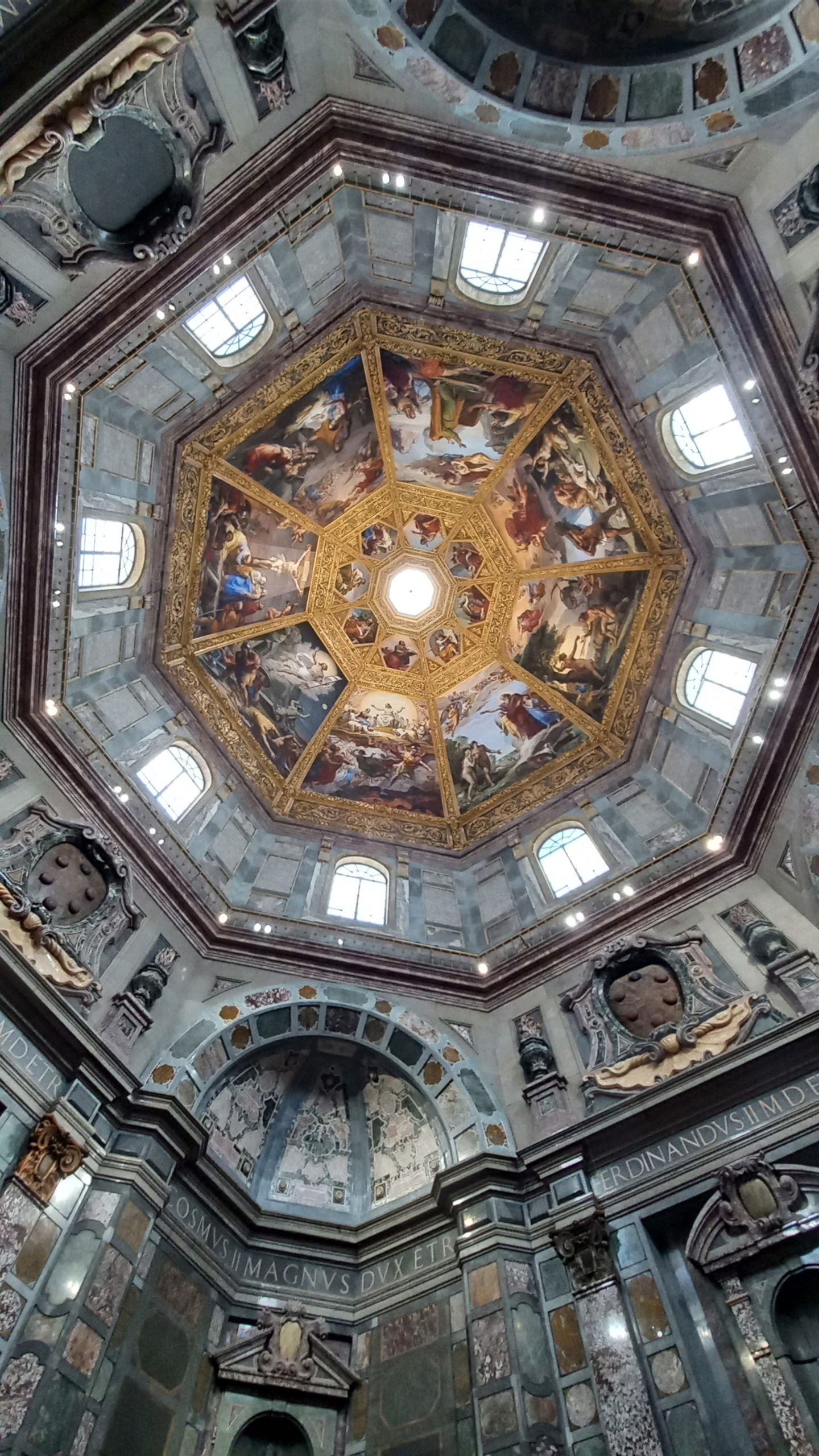
Sliding a large sheet of thin paper from a folder and smoothing it out on the table in front of him, Roberto Guarnieri is setting out the ground rules of art for amateurs.
“The first rule is to enjoy, you must smile,” the retired architect, artist and co-owner of Studio Iguarnieri tells the group of four gathered on the grass outside the peach and custard-coloured walls of Villa La Massa, a historic hotel perched on a picturesque bend of the river Arno, just outside Florence.
The other rules? No judgment (of your own or others’ work) and if you mess up, it’s better to start again than try to correct it.
There’s no shortage of jaw-dropping beauty and artistic inspiration to be found in the Tuscan metropolis. “In Florence, there is a serious energy about art,” Guarnieri says, crediting the Medici family for “the proportions, the colours… beauty survives”.
The dynasty of bankers and politicians who ruled from the 1400s to the 1700s come up a lot during my stay. Down in the crypt of the Cappelle Medicee a bronze statue honours the last of the clan.
A pact ensured the family’s treasures must stay in Florence for public enjoyment, and they’ve attracted visitors.
Case in point: the magnificent baroque funeral chapel above the crypt, a vast octagonal space lined with marble panels in dark green, grey, brown and red. And, next door, a smaller, more minimalist chapel, the work of Renaissance artist Michelangelo, where four other Medicis are buried.
The family was also responsible for Villa La Massa, which dates back to the Medici era and passed through the hands of a variety of aristocratic owners, before becoming a luxury hotel in 1953.
Comprising a cluster of buildings (including a former flour mill and farm house, and the tiny chapel where the late David Bowie married his wife Iman in 1992), the secluded property features opulent but modern decor, each room uniquely decorated in sumptuous colours.
The culinary arts are held in high esteem in Tuscany, as I learn when I sit down in the kitchen of Casa Colonica, a former farmhouse where I’m stationed at Villa La Massa, for a cookery demo with chef Stefano Ballarino.
Gently prodding and stretching a spongy dough into an undulating oval, chef douses it with olive oil and rock salt and slides it into the oven.
Fifteen minutes later we’re savouring steaming chunks of focaccia topped with creamy goat’s cheese, pecorino, salami and mortadella ham.
My epicurean adventures continue the next afternoon at Vallepicciola vineyard, an hour from Florence.
Jumping in the back of an open-topped jeep, we zoom off on a tour of the estate, where the vines are still snoozing, only a few tiny green buds beginning to sprout.
Hopping out at the top of a hill, we duck into a deconsecrated chapel lined with barrels of Vinsanto dessert wine. Resting in the cool, high-ceilinged space, they’re in the midst of a five-year aging process. Most of the wine production here happens underground (the subterranean temperatures help save energy). Gazing down from the overhead walkways, we see gleaming stainless steel vats awaiting the arrival of this year’s freshly squeezed juice.
“It’s quiet now, but from August to November, this area is always busy,” says tour guide Federico Gutierrez, leading us another level down, where rows and rows of Hungarian oak barrels lie in the dark.
Brandishing a glass pipette, Gutierrez extracts samples of Migliore Rosso that hasn’t yet reached its full potential (it still tastes pretty delicious to my untrained palate).
Back on ground level, we sup seven of the vineyard’s top drops, from a lightly fizzing Spumante to a deep Cabernet Franc, and deliberate over which to take home.
Founded in 1999 on the grounds of an old nunnery, Vallepicciola is one of the youngest vineyards in Tuscany.
Committed to sustainable viticulture, the estate uses photovoltaic panels to power the cellar, and the buildings, constructed with local materials, designed to blend in.
Incredible architecture and modern techniques that honour the heritage of the region. No doubt the Medicis would approve.
P.S.
Currently the talk of the town, Donatello: The Renaissance is billed as a once in a lifetime retrospective examining the great sculptor.
Open until July 31 at Palazzo Strozzi, the show traces the artist’s earliest works in terracotta, through to chubby cherubs and gleaming golden religious figures.
Factfile:
Rates at Villa La Massa (villalamassa.com) start from €520 (around £470) for a double deluxe room per night, including breakfast.

Enjoy the convenience of having The Sunday Post delivered as a digital ePaper straight to your smartphone, tablet or computer.
Subscribe for only £5.49 a month and enjoy all the benefits of the printed paper as a digital replica.
Subscribe © Press Association Images
© Press Association Images